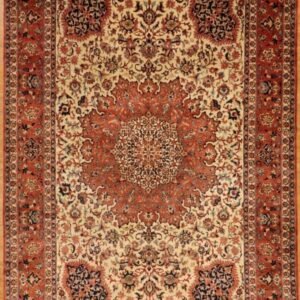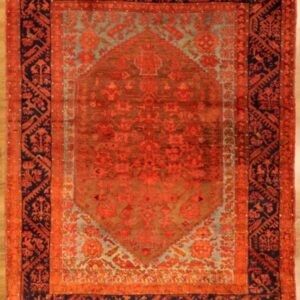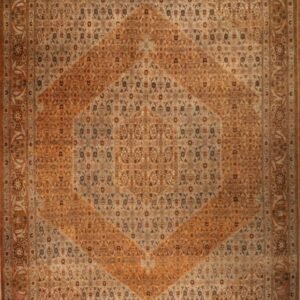Serial No.: 0009817
Origin: Caucasian, Azerbaijan
Town: Shirvan
Age: Late 19th Century
Style: Tribal Geometric
Size: 3’8″ x 9’3″
Material: Wool pile and wool foundation, vegetable dyed
Color Scheme: Ivory, Red, Blue, Yellow
Condition: Excellent
Expert Description
This late 19th-century Shirvan runner exemplifies the vibrant tribal artistry of the eastern Caucasus, featuring a compartmentalized geometric field that highlights the region’s penchant for crisp design and bold color contrasts. Each rectangular or stepped compartment encloses stylized motifs—ranging from latch-hook figures to abstracted floral elements—reflecting the strong tribal geometric aesthetic for which Shirvan is renowned.
Weaving Techniques & Materials
Woven on a wool foundation with a wool pile, this rug employs the symmetrical (Turkish) knot, ensuring precise articulation of the angular patterns. The use of local sheep’s wool provides both resilience and a natural luster, further enhanced by the vegetable-dye process. Colors such as red (likely derived from madder), blue (indigo), and yellow (weld or similar plant sources) combine with a warm ivory ground, forming a balanced yet striking palette that underscores the design’s geometric clarity.
Regional & Cultural Context
Located in present-day Azerbaijan, Shirvan has long been a significant center for rug production, where weaving served as both a practical craft and a medium of cultural expression. Late 19th-century workshops—often small family enterprises—produced pieces that merged tribal symbolism with technical finesse. Motifs in this rug may carry connotations of protection, community identity, or fertility, echoing the oral traditions and shared beliefs of local weavers.
Artistic & Historical Significance
The elongated format and compartmental layout are emblematic of certain Shirvan runners, prized for their bold presence and the narrative suggested by each successive medallion or panel. Despite its age, the rug remains in excellent condition, preserving the crispness of its lines and the vibrancy of its natural dyes. Collectors and textile scholars value such works for their insight into Caucasian weaving traditions, where each piece is a testament to regional heritage, meticulous craftsmanship, and enduring aesthetic appeal.
This runner thus stands as a compelling artifact from late 19th-century Shirvan, marrying utilitarian purpose with artistic ambition. It captures the essence of a weaving culture that continues to fascinate connoisseurs and historians alike, offering a tangible link to the creativity and resilience of Azerbaijan’s rug-making communities.







Reviews
There are no reviews yet.